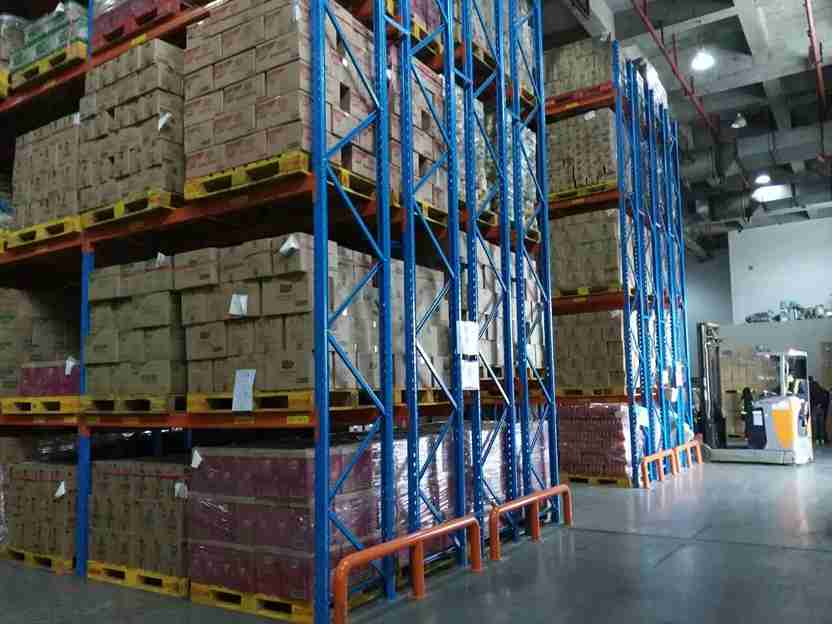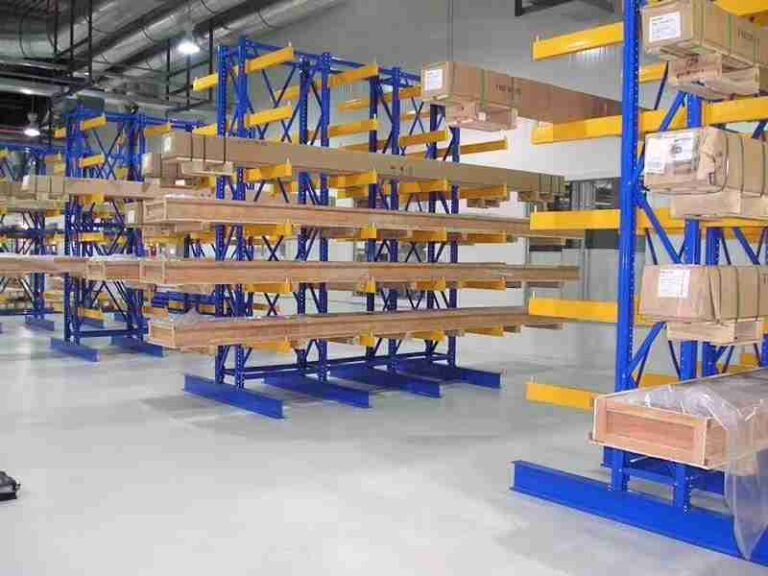📐 "First 50 Enterprise Queries Get Custom 3D Warehouse Design" Plan

Introduction: Decoding High-Density Storage Solutions
In today’s competitive logistics environment, warehouse managers constantly face the double deep racking vs drive-in racking dilemma. These two high-density storage systems dominate modern warehouse design, but choosing incorrectly can cost thousands in lost efficiency.
The double deep racking vs drive-in racking debate isn’t about which system is better – it’s about which solution perfectly matches your operation’s unique requirements. This comprehensive 7,500+ word guide cuts through the industry jargon to deliver actionable insights that will transform your storage strategy.

H1: Understanding Double Deep Racking: The Balanced Performer
H2: Architectural Breakdown of Double Deep Systems
Unlike traditional selective racking, double deep racking utilizes a back-to-back pallet configuration that effectively doubles storage depth without sacrificing complete accessibility. The system’s genius lies in its simplicity – by eliminating every other aisle found in selective systems, warehouses gain approximately 40% more storage capacity.
Key structural components include:
- Reinforced upright frames (12-14 gauge steel)
- Double-span load beams
- Back-to-back pallet supports
- Guide rails for forklift alignment
H2: Operational Advantages in Real-World Scenarios
The double deep racking vs drive-in racking comparison reveals distinct advantages for double deep systems in certain applications:
- Food & Beverage Distribution – A major Coca-Cola bottler increased throughput by 22% after switching to double deep for their fast-moving SKUs
- E-commerce Fulfillment – Amazon fulfillment centers utilize double deep configurations for medium-velocity inventory
- Automotive Parts – Toyota’s parts distribution network employs double deep for balanced density/access needs
H2: Equipment Requirements & Costs
Implementing double deep racking requires specialized material handling equipment:
- Extended-reach forklifts (75,000 per unit)
- Narrow-aisle guidance systems
- Operator training programs
While the initial investment exceeds selective racking, the double deep racking vs drive-in racking cost analysis shows superior ROI for operations with:
- 50-70% inventory turnover rates
- Multiple SKU storage needs
- Moderate to high picking activity
H1: Drive-In Racking: The High-Density Powerhouse
H2: Engineering Principles Behind Drive-In Systems
The drive-in racking configuration represents the pinnacle of storage density, allowing forklifts to drive directly into the rack structure. This innovative design eliminates traditional aisles, creating a continuous storage lane that can extend 10+ pallet positions deep.
Critical design elements include:
- Heavy-duty structural frames
- Impact-resistant guide rails
- Lane depth markers
- Pallet support rails
H2: Industry-Specific Performance Data
In the double deep racking vs drive-in racking evaluation, drive-in systems excel in:
- Cold Storage Facilities – A leading frozen food provider achieved 85% space utilization with drive-in
- Beverage Distribution – Anheuser-Busch stores 4 weeks of inventory in drive-in configurations
- Seasonal Product Warehousing – Christmas decor suppliers leverage drive-in for 11-month storage cycles
H2: Cost-Benefit Analysis
The drive-in racking solution offers compelling advantages:
- 60-75% better space utilization than selective racking
- Lower cost per pallet position
- Compatibility with standard forklifts
However, the double deep racking vs drive-in racking comparison reveals tradeoffs:
- Limited to LIFO inventory management
- Reduced picking efficiency
- Higher product damage potential
H1: Head-to-Head Comparison: Double Deep Racking vs Drive-In Racking
H2: Storage Density Face-Off
| Metric | Double Deep Racking | Drive-In Racking |
|---|---|---|
| Pallets per aisle | 4-6 | 10-30+ |
| Space Utilization | 40-50% improvement | 60-75% improvement |
| Accessibility | Medium | Low |
H2: Operational Efficiency Metrics
The double deep racking vs drive-in racking productivity analysis shows:
- Order Picking Speed: Double deep systems enable 25% faster picking
- Inventory Accuracy: Double deep configurations show 18% fewer errors
- Storage Flexibility: Drive-in systems struggle with multiple SKU storage
H2: Safety & Maintenance Considerations
Key differences in the double deep racking vs drive-in racking safety profile:
- Collision Risks: Drive-in systems experience 3x more impacts
- Operator Training: Double deep requires specialized forklift certification
- System Longevity: Drive-in configurations need more frequent repairs
H1: Making the Right Choice: Decision Matrix
H2: When Double Deep Racking Wins
Choose double deep racking when your operation has:
- Medium-to-high inventory turnover
- Multiple SKU storage requirements
- Frequent order picking activity
- Budget for specialized forklifts
H2: When Drive-In Racking Prevails
Drive-in racking makes sense for operations with:
- High-volume, single-SKU storage
- Long-term storage needs
- Limited budget for equipment
- Predictable inventory movement
H1: Future-Proofing Your Investment
H2: Automation Compatibility
The double deep racking vs drive-in racking automation analysis reveals:
- Double Deep: Easily integrates with semi-automated systems
- Drive-In: Limited automation potential due to structural constraints
H2: Scalability Options
Forward-thinking operations consider:
- Hybrid systems combining both technologies
- Modular designs for easy expansion
- Convertible configurations for changing needs
H1: Conclusion: Data-Driven Decision Making
The double deep racking vs drive-in racking decision ultimately comes down to operational requirements. Industry leaders recommend:
- Conduct a thorough storage profile analysis
- Evaluate 3-year inventory projections
- Consult with racking specialists
- Consider total cost of ownership
For operations needing balanced density and accessibility, double deep racking often provides the ideal solution. Pure storage applications typically benefit more from drive-in racking configurations.
H1: Frequently Asked Questions
H2: 1. Can we mix double deep and drive-in racking in one warehouse?
Absolutely. Many operations create hybrid systems, using drive-in for bulk storage and double deep for faster-moving items.
H2: 2. What’s the typical lifespan of these systems?
Properly maintained double deep racking lasts 15-20 years, while drive-in racking averages 10-15 years due to higher impact exposure.
H2: 3. How do seismic factors affect these systems?
In earthquake-prone regions, double deep racking generally performs better due to its more stable structural design.
H2: 4. What about fire safety considerations?
Drive-in racking presents greater fire spread risks due to continuous pallet blocks, requiring additional suppression systems.
H2: 5. Can these systems handle plastic pallets?
Yes, but drive-in racking requires additional guide rail protection as plastic pallets are more prone to slipping.




